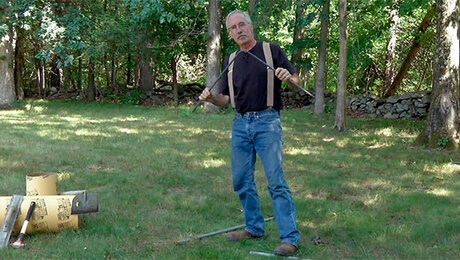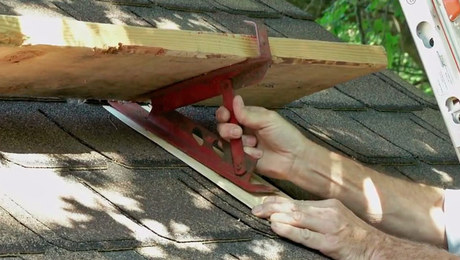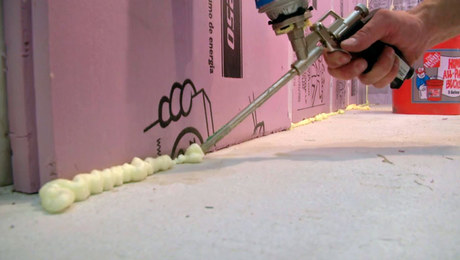If you have some painting to do you could grab the bucket hook your thumb through the bail and wait for your thumb to cramp up, but there’s a better way.
Professional painters usually paint out of a cut bucket, which is a paint can with the rim removed. When they’re holding the can they typically support the can from underneath with their hand and then hook their thumb around the bail, which can get very uncomfortable. To remedy this problem, Bryan Humphrey of Wilimington, N.C., rigged up his cut bucket with a key ring. Once installed around the bail it provides a steady and comfortable way to hold the paint can.



























View Comments
Very nice. We've taken an empty paint can ($4.98), modified it with a 50-cent key ring, and .... improvised a $2.95 factory-made plastic cut bucket?
Not to mention that the plastic one fits nicely in the hand, has a nice pour spout, a flat side that wipes your brush just right, and a magnet to hold the brush when you take a break.
Or, you can spend $7.95 for the fancy Werner version, which includes a handy peg for hanging it from Werner's ladder tops.
At least, when the paint can rusts away, I can soak up the rust with linseed oil- and make my own barn-red paint!
Sort of agree with Renosteinke above but not completely.
First another reason not to paint from the original can is the sealing ring gets full of paint and makes proper replacement of the lid impossible.
I don't use a plastic pail. I use a metal one but still a dedicated pail not a cut bucket.
Proper way to load a brush is to dip 1/4"-1/2" in paint then slap the brush on the side of the pail to knock off any excess paint which would drip off the brush. Don't wipe the brush.
When finished painting, pour paint from pail into original paint can then take your brush and collect any remaining excess paint in the pail then pour that also into the can or transfer it with the brush.
You clean the pail with the brush. Especially with oil paint first wipe any excess paint from the brush with newspaper. Then put 1-2" of the appropriate solvent in the pail and use the brush to remove the paint. When you've cleaned the whole pail, spin the brush with the handle between your palms and the brush down in the pail to get rid of excess solvent. Repeat with clean solvent until the solvent remains clear after the last cleaning. Latex solvent (water) disposal is easy but paint thinner is another issue. You need 4-5 empty thinner gallon cans. Mark each can for cleanliness. First cleaning gets disposed of and the second is saved for future first cleaning etc. Takes about a gallon of thinner to clean a brush.
I'm a general contractor but all of the above came from an old time union painter.
I've been using this plastic one with comfortable handle rom Home Depot: [url]http://www.homedepot.com/p/HANDy-Paint-Pail-1-qt-Red-Paint-Pail-with-Strap-and-Brush-Magnet-2500/100170461[/url]. Another nice thing is the replaceable liners.